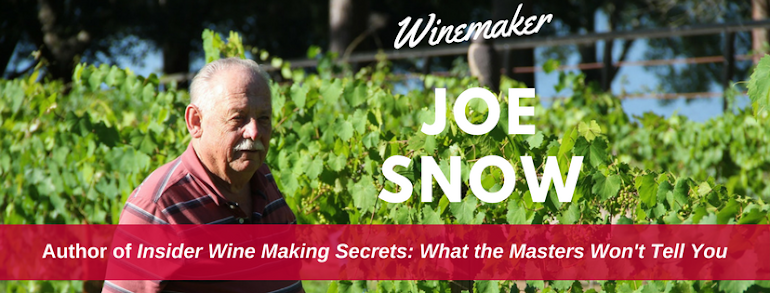You May Contact Me at:
WineMakingSecrets@Gmail.Com
Someone asked me how to change the taste of wine when it is too sweet or too dry. I offered the following method to do just that.
How To Make Any Wine
Taste Good To You
From The Desk of: N. Joe Snow
It is really hard to please
everyone with one kind of wine. I guess that’s why there are so many varieties.
Take a look at any place that sells wine, wow 100’s maybe 1000’s of different
wines to choose from and maybe 5 to 8 percent are sweet wines.
That being said, if you get
10 people together for a wine tasting and bring out one wine variety, some will
say it’s too sweet, and some will say it’s too tart or dry or not sweet enough,
and some will say it’s good, I like it. Believe me I know, I’ve done it
countless numbers of times, trying to make everyone happy with my wines. Well,
it can’t be done.
Most commercial wines are
not sweetened by adding sugar after fermentation and are tart or dry. However,
there are some wineries that do add sugar and these wines are usually labeled
“Sweet Red” or some such name. Home made wine makers usually add some sugar
after fermentation because their wine is more full bodied and not watered down.
And lot of people like a
sweeter wine. But, therein lays the problem. How much sugar do you add? Add too
much and you can’t remove it once it’s in solution. The wine may be too sweet
for some. So what we do is add a small amount as not to make it too sweet. But
there is a solution to this problem for the sweeter wine lovers.
The solution is you must be the one to intervene.
And it is really easy to make that bottle of wine just right. Just add sugar.
Like sweetening tea or coffee, just add sugar. No you don’t want to pour a
glass of wine and stir in a teaspoon of sugar. Although, that will also work,
it’s just not very refined, and it is hard to get the sugar granules to
dissolve.
How do I do this, you ask?
Open the bottle, pour a small mount into a glass, taste it. If is not sweet
enough or too dry for your taste, through a funnel or measuring cup with a
spout, pour one tablespoon of simple syrup ( equal parts sugar and water,
melted in a pot on a stove) into the bottle. Replace the cork, turn the bottle
up side down and back up a few times. Now pour a little, taste it, if it’s
still not sweet enough, add another tablespoon and repeat the process. Continue
doing this until you have the perfect bottle of wine suited to your taste.
So, no matter where you get
your wine or what kind it is, you can always make it less tart or sweeter and
less dry by adding a little sugar.
To make wine less sweet, is
a horse of a different color. The only thing you can do here is get the driest
wine you can find and mix it with the sweet wine. This may sound extreme, but
the wineries do it all of the time. How do you think they get hundreds of wine
flavors out of a hand full of grape varieties suitable for making wine? Heck,
you may come up with the best wine you ever tasted using these techniques.
Cheers!








